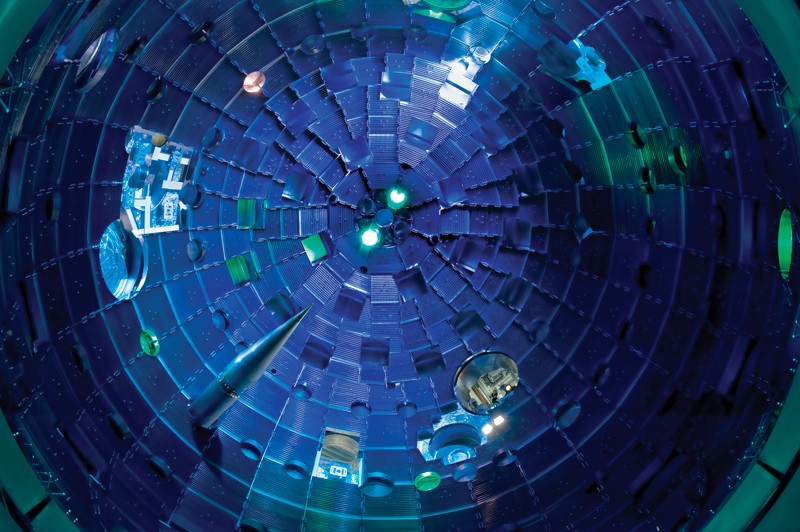In the summer of 2021, scientists from Livermore National Laboratory were able to obtain a self-sustaining thermonuclear reaction. But repeated experiments conducted under the same conditions did not show the same brilliant result. Researchers are figuring out what’s the matter.

Self-sustained thermonuclear reaction
Lawrence Livermore National Laboratory in California was informed that on August 8, 2021, they managed to obtain a self-sustaining thermonuclear reaction. The analysis of this experiment indicates the achievement of 9 different indicators of the Lawson criterion.
A thermonuclear reaction is a high-energy process that is quite easy to obtain in the laboratory. It is much more difficult to understand when it creates such conditions when it can support itself. The set of conditions under which the reaction becomes self-sustaining was named after the American physicist John Lawson, who proposed it in 1955.
Installation for thermonuclear reaction
The installation used by physicists at the Livermore Laboratory contained 192 powerful lasers that focused on a capsule with thermonuclear fuel. It was in a depleted uranium chamber covered with gold.
When the lasers are turned on, the capsule turns into a plasma clot, in which powerful shock waves directed inward arise. This creates the conditions under which a self-sustaining thermonuclear reaction takes place. The hydrogen atoms were synthesized, releasing 1.3 megajoules of energy for 100 trillionths of a second, which is 10 quadrillion watts of power.
Reaction failed to repeat
But the most important thing is that scientists have reported that they cannot repeat the achieved result now. Researchers have conducted tens of thousands of experiments over the past 70 years in order to obtain a controlled thermonuclear reaction. Even artificial intelligence has recently been attracted to them. In the Livermore Laboratory itself, they have been going on for 10 years at this facility.
And in a repeated series of four experiments, the resulting energy output was twice less than what happened on August 8, 2021. Now physicists are trying to figure out why they failed to light the Sun again.
In their opinion, it’s a matter of microscopic differences in the formulation of the experiment: the structure of the fuel capsule and the intensity of the lasers. We can definitely say that they were lucky with the initial conditions of the experiment.
But now they are thinking not so much about what imperceptible differences made ignition possible, but also about how to make the process less sensitive to such changes. After all, the final result of them should be industrial installations, which will be impossible to achieve such accuracy.
According to www.sciencealert. com
Follow us on Twitter to get the most interesting space news in time
https://twitter.com/ust_magazine
